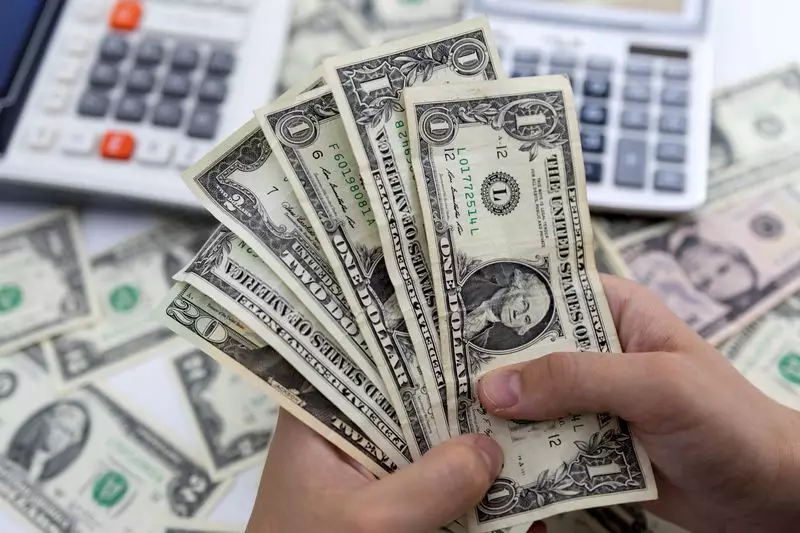Financial markets often react sharply to political statements, and recent comments from former President Donald Trump regarding tariffs have created a notable ripple effect. The U.S. dollar finds itself in a precarious position, marked by fluctuations and uncertainty. As President Trump alluded to potential tariffs against imports from China, Mexico, and Canada, the implications for the dollar have sparked a mixture of anxiety and speculation among investors worldwide.
The dollar recently reached a two-week low, primarily induced by the unclear stance on proposed tariffs. Trump’s declaration of a possible 10% tariff on Chinese imports, along with threats of 25% levies on goods from Mexico and Canada, have left market players in a state of confusion. The initial response was clear: a 1.2% drop in the dollar index against a basket of other major currencies. The ongoing uncertainty surrounding these policies has stymied attempts for recovery, underpinning the market’s volatility.
Despite a brief stabilization, the dollar index, which measures the greenback’s strength against several major currencies, struggled to maintain upward momentum. Reports indicate that while U.S. officials advocate for a measured implementation of potential tariffs, the lack of specifics has nevertheless engendered apprehension among traders and investors alike.
In the wake of Trump’s comments, other currencies began to show a range of responses. For instance, the euro initially dipped but later regained strength, climbing to its highest value against the dollar in recent weeks. Meanwhile, the British pound also experienced fluctuations, showcasing the dynamic nature of global currencies in response to the American economic stance. Such variability in currency performance is indicative of how intertwined global economies are and how U.S. trade policy can ripple through various financial landscapes.
What is particularly notable is that analysts foresee overarching effects stemming from Trump’s proposed policies. While some economists argue that these measures could foster economic growth, they also recognize the potential for inflation. This duality indicates a complex interplay between growth strategies and risk factors that investors must navigate.
As market participants ponder the implications of Trump’s tariff approach, there is also speculation regarding the Federal Reserve’s monetary policy. With traders anticipating a potential quarter-point interest rate cut by mid-year, and opinions split on another cut before the year ends, the current economic climate remains precarious. Interest rates have direct ramifications on currency valuation, and any adjustments could lead to further volatility in the dollar’s value.
Market dynamics furthermore highlight a certain resilience among other currencies, particularly the Canadian dollar and the Mexican peso, which displayed moderate movements amid fluctuating conditions. Following a week of considerable volatility for the Canadian dollar, a slight recovery was observed, suggesting potential stabilization in a complex trading environment.
As the conversation surrounding tariffs and trade continues, experts suggest that Trump’s contemplation of a 10% tariff represents a departure from the more aggressive protectionist stance he championed during his campaign. Instead, it appears that the current administration might be positioning itself more favorably for negotiations with China and other trade partners. This shift could potentially lead to a more stable economic backdrop, albeit contingent on how these tariffs are rolled out.
Analysts like Alvin Tan express a cautiously optimistic viewpoint, asserting that the lesser tariff proposals may reflect a strategy aimed more at negotiation than outright protectionism. If this trend holds, it could diminish immediate inflation risks and provide a cooling effect on the currency market.
The U.S. dollar’s recent performance exemplifies the direct impact of political rhetoric on financial markets. As traders contend with uncertainty stemming from President Trump’s tariff discussions, market participants must remain vigilant and adaptable. The evolving relationship between trade policies, currency values, and broader economic contexts will continue to play out in the weeks ahead, necessitating careful observation and strategic planning among investors. As the landscape changes, one thing remains clear: navigating the complexities of the currency market requires a keen understanding of both the economic fundamentals and the geopolitical landscape.

